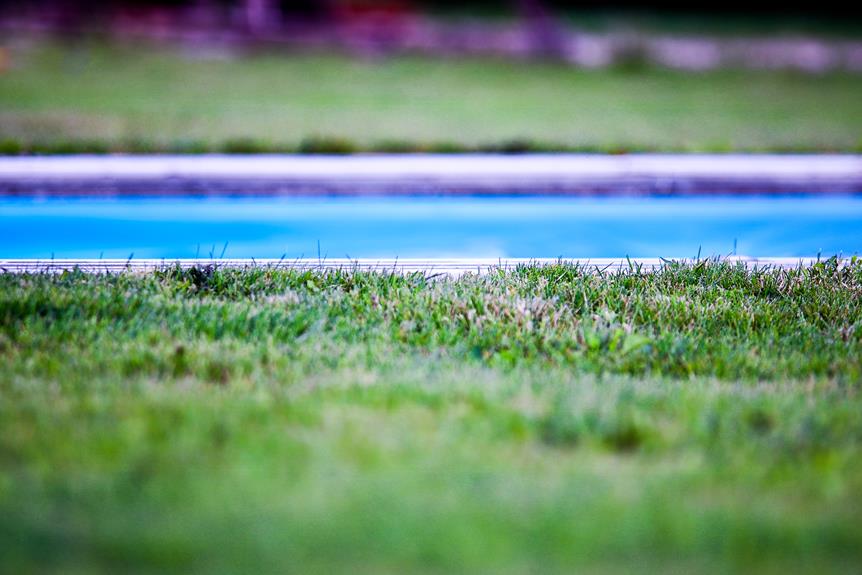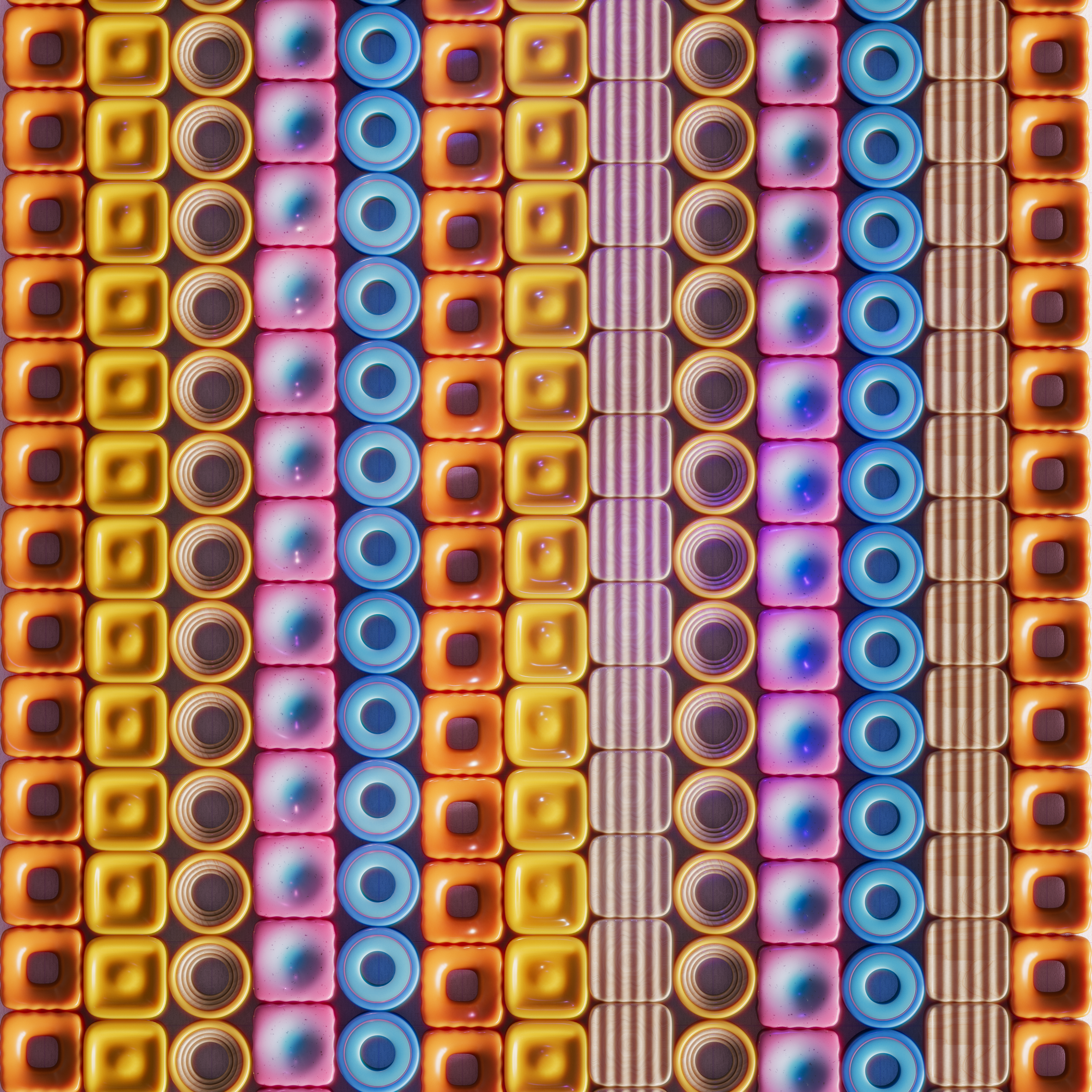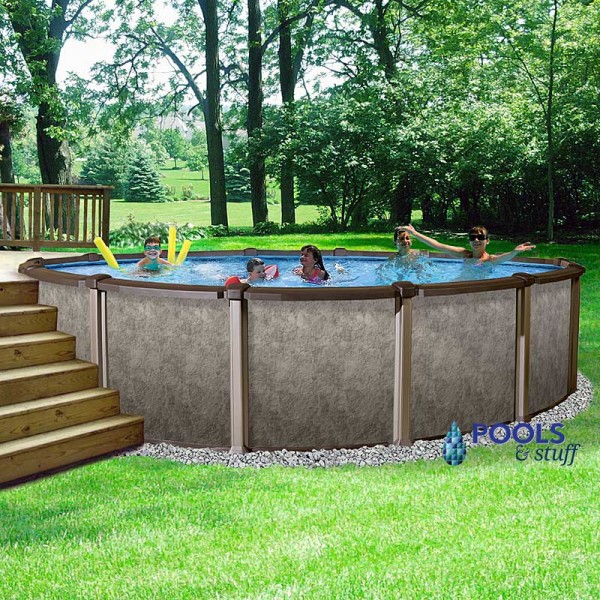Are you worried your above ground pool may have a leak? Don’t fret, because this article will guide you on how to find and fix leaks in your pool. Regular checks are essential for maintaining pool longevity and functionality. Equipment checks help identify leaks, and if no leaks are found, it’s time to inspect the vinyl liner. We’ll provide different methods to locate the leak and teach you how to patch it. With the right guidance, finding and repairing a leak can be a breeze. Let’s dive in and discover how to find a leak in your above ground pool.
Key Takeaways
- Thoroughly check the pool and equipment for leaks, including the pump, piping, return line, skimmer, and filter.
- If equipment checks don’t reveal any leaks, move on to checking the vinyl liner using different methods.
- Look for puddles or damp areas around the pool and use the bucket method to detect leaks in the plumbing.
- Patch the leak using waterproof tape for small leaks, vinyl patches for holes in the pool wall, or patch kits for larger holes. Consider seeking professional help if needed.
Equipment Checks
To ensure a thorough inspection, thoroughly check the pool and equipment for any leaks or wetness. Equipment maintenance is crucial in maintaining the functionality of your above ground pool. Start by looking for wetness on or around the equipment. Dry any wet areas with a towel and observe if they become wet again. Common equipment issues include leaks in the pump, piping, return line, skimmer, and filter. Carefully inspect these areas for any signs of leakage. If you don’t find any leaks during the equipment checks, it’s time to move on to finding leaks in the vinyl liner.
Finding leaks in the vinyl liner can be a bit trickier. You can try using different methods to locate the leak in the pool liner, such as the bucket test. This test involves comparing the water level inside a bucket with the pool’s water level. Conduct the test while the pump is running to check for leaks in the plumbing. Another method is using ink and a syringe. Inject the ink near the suspected area and observe the movement of the dye towards the wall. Repeat the ink test to ensure the accuracy of the leak’s location.
Once you have located the leak, it’s important to patch it up to prevent further damage. For small leaks, waterproof tape can be used. Apply vinyl patches for holes in the pool wall. For larger holes, you can utilize patch kits that include vinyl liner pieces and adhesive. However, if you are unable to successfully patch the leak, it is advisable to seek professional help.
Finding Leaks in the Vinyl Liner
If you’re unsure about how to locate a leak in the vinyl liner, consider reaching out to a pool professional for assistance. However, if you’re up for the challenge, there are several methods you can try to find the leak on your own.
To begin, visually inspect the pool liner for any visible damage or holes. If you spot any, take note of their location as this will help in the patching process later on. Next, you can perform a simple water loss test. Fill a bucket with water and place it on the pool stairs or ledge, making sure it is submerged. Mark the water level inside the bucket and the pool’s water level. Wait for 24 hours and compare the two levels. If the pool’s water level drops significantly more than the bucket’s, it indicates a leak.
If you suspect the leak is in the vinyl liner, there are waterproof tape alternatives you can use for temporary fixes. However, keep in mind that these are not permanent solutions and may require reapplication over time. For small leaks, you can apply a specialized vinyl patch using adhesive designed for underwater use. These patch kits typically include vinyl liner pieces and adhesive for larger holes or tears.
While DIY patching can be effective, it’s important to recognize when it’s time to seek professional help. If the leak is large, extensive, or difficult to access, it’s best to leave it to the experts. They have the experience and knowledge to handle more complex repairs and ensure a proper fix that will last.
Checking the Area Around the Pool
You can easily check for any signs of moisture or wetness around the pool area, which could indicate a leak. Take a thorough look at the ground surrounding the pool, paying close attention to any puddles or damp areas. These could be clear indicators of a leak. In addition to visual inspection, there are two methods you can use to further pinpoint the leak in the pool area: the bucket method and the dye method.
The bucket method involves placing a bucket filled with water on the pool steps or ladder, making sure the water levels inside and outside the bucket are the same. Allow the pool pump to run for 24 hours and then compare the water levels. If the water inside the bucket has dropped significantly more than the water in the pool, it may suggest a leak in the plumbing.
The dye method utilizes ink and a syringe. Inject the dye into the area where you suspect the leak, and observe the movement of the dye towards the pool wall. This can help you pinpoint the exact location of the leak. Repeat the process to ensure accuracy.
While these methods can be effective, it’s important to note that finding and fixing leaks in an above ground pool can be a complex task. If you’re uncomfortable or unsure about the process, it’s highly recommended to seek professional assistance. Pool professionals have the expertise and specialized equipment to accurately detect and repair leaks. Their knowledge and experience can save you time, effort, and potential damage to your pool.
The Bucket Method
Now let’s discuss the bucket method, a simple yet effective technique for detecting leaks in your above ground pool. By comparing the water level inside a bucket with the pool’s water level, you can determine if there is a leak present. This method allows you to pinpoint the leak’s location and assess its severity, providing valuable information for the repair process.
Bucket Vs. Dye: Pros
To determine the location of the leak in your above ground pool, consider using either the bucket method or the dye test. Both methods have their pros and cons. The bucket method is cost-effective and easy to perform. It involves placing a bucket filled with water on the top step of your pool and marking the water levels inside and outside the bucket. If the water level outside the bucket drops faster, it indicates a leak. On the other hand, the dye test is more accurate but may require professional assistance. By adding dye to the water near suspicious areas, you can observe the movement of the dye towards the wall, pinpointing the exact location of the leak. Although the bucket method is less accurate, it can still provide valuable information to guide the subsequent steps in locating and repairing the leak in your above ground pool.
Accuracy of Bucket Method
The bucket method is a cost-effective and easy way to determine the location of a leak in your pool. Here’s why the bucket method is effective and how it compares to the dye test:
- Accuracy: The bucket method is highly accurate in pinpointing the location of a leak. By comparing the water level inside the bucket with the pool’s water level, you can identify whether the leak is in the pool or due to evaporation.
- Cost-effectiveness: Unlike the dye test, which requires purchasing dye and a syringe, the bucket method only requires a bucket and water. It is a budget-friendly option for detecting leaks.
- Ease of use: Conducting the bucket test is simple. Just place a bucket filled with water on the pool steps and observe the water levels. If the water level inside the bucket drops more than the pool’s water level, you have a leak.
When it comes to finding leaks in your pool, the bucket method is an effective and affordable option. However, if you’re uncomfortable with the process or unable to locate the leak, it may be time to call a pool professional for assistance.
When to Call Professional?
If you’re unable to successfully patch the leak in your pool, it’s time to consider seeking professional help. Calling a professional is necessary when you encounter signs of a major leak that you can’t handle on your own. Some signs include a sudden drop in water level, excessive water loss, or persistent dampness around the pool area. A pool professional has the expertise and equipment to accurately locate and repair the leak, ensuring minimal damage to your pool. They can also advise you on the best course of action to prevent future leaks. By entrusting the task to a professional, you can have peace of mind knowing that your pool will be in good hands. Now, let’s explore the ink test to further pinpoint the exact location of the leak.
The Ink Test
If you’ve exhausted the bucket method and still haven’t found the location of the leak in your above ground pool, it’s time to consider the ink test. This method involves injecting ink into the water near the suspected area and observing its movement towards the wall. The ink test can be a valuable tool in pinpointing the exact location of the leak, allowing for more targeted repairs.
Advantages of Ink Test
Using ink and a syringe is a reliable method to pinpoint the exact area where the leak is in your above ground pool. Here are the advantages of using the ink test to find a leak:
- Accuracy: The ink test allows you to precisely locate the source of the leak by observing the movement of the dye towards the wall. This ensures that you can target the repair efforts to the exact spot, saving time and resources.
- Cost-effective: Performing the ink test yourself is a cost-effective option compared to hiring a professional. It requires minimal equipment and can be done at your convenience.
- DIY-friendly: The ink test is a simple and straightforward process that can be easily done by most pool owners. It doesn’t require specialized skills or knowledge, making it accessible to anyone.
Effectiveness of Ink Test
To determine the effectiveness of the ink test in identifying leaks, you should compare the results with other methods. While the ink test can be a reliable way to pinpoint the exact location of a leak in an above ground pool, it is important to consider other leak detection methods as well. One commonly used method is the bucket test, where you compare the water level inside a bucket with the pool’s water level to detect any discrepancies. By comparing the effectiveness of the dye test and the bucket test, you can gather more comprehensive information about the presence and location of leaks in your pool. Once you have determined the most effective method for detecting leaks, you can proceed to the next step of patching the leak to prevent further damage.
Patching the Leak
Once you have located the leak in your above ground pool, it is important to patch it to prevent further damage. Here are some patching techniques to consider:
- Waterproof tape for small leaks: If you have identified a small leak in your pool, waterproof tape can be an effective solution. Simply clean and dry the area around the leak, then apply the tape firmly over it. Make sure to smooth out any air bubbles for a secure seal. Waterproof tape is a quick and temporary fix that can buy you some time until a more permanent solution can be implemented.
- Vinyl patches for holes in the pool wall: For larger holes or tears in the vinyl liner, vinyl patches are recommended. These patches can be purchased in patch kits that typically include adhesive as well. Clean and dry the affected area, then apply the adhesive to the patch and press it firmly onto the hole. Smooth out any wrinkles or air bubbles for a strong bond. Vinyl patches provide a more durable and long-lasting repair.
- Patch kits for larger holes: If the leak in your above ground pool is significant, patch kits specifically designed for larger holes are available. These kits usually come with vinyl liner pieces and adhesive. Follow the instructions provided in the kit to properly clean, cut, and apply the patch. These patch kits offer a comprehensive solution for repairing larger holes and preventing further damage.
Waterproof Tape for Small Leaks
If you have identified a small leak in your pool, waterproof tape can be an effective solution for patching it and preventing further damage. However, there are also alternatives to waterproof tape that you can consider for patching small leaks in your pool. One alternative is using sealants specifically designed for sealing and repairing leaks in pools.
These sealants are often made of a flexible and durable material that can withstand the harsh conditions of a pool environment. They can be applied directly to the leaky area and create a watertight seal, effectively stopping the leak. Some sealants come in a tube or cartridge, making them easy to apply with a caulking gun or a squeeze bottle.
When using sealants, it is important to follow the manufacturer’s instructions carefully. Clean the area around the leak thoroughly and ensure it is dry before applying the sealant. Apply the sealant generously, making sure to cover the entire leaky area. Allow the sealant to cure completely before refilling the pool with water.
While waterproof tape and sealants can be effective for small leaks, it is important to note that they may not be suitable for larger or more severe leaks. In such cases, it is recommended to seek professional help to properly repair the leak and prevent further damage to your pool.
Vinyl Patches for Pool Wall Holes
When it comes to patching holes in the wall of your above ground pool, vinyl patches are a popular choice. They are easy to use and can effectively seal the hole, preventing further leaks. However, like any solution, there are pros and cons to using vinyl patches for pool wall holes. Here are some important points to consider:
Pros of using vinyl patches for pool wall holes:
- Easy application: Vinyl patches are simple to apply and require minimal tools or expertise. You can easily patch the hole yourself without needing to hire a professional.
- Cost-effective: Vinyl patches are relatively inexpensive compared to other repair options. This makes them a budget-friendly choice for pool owners.
- Durable: Vinyl patches are designed to withstand the harsh environment of a pool. They are resistant to water and can last for a long time, providing a reliable solution for wall holes.
Cons of using vinyl patches for pool wall holes:
- Limited effectiveness for larger holes: While vinyl patches work well for small to medium-sized holes, they may not be as effective for larger holes or tears. In such cases, it may be necessary to seek professional help or consider alternative repair methods.
- Appearance: Vinyl patches may not blend seamlessly with the rest of the pool wall, especially if the patch is a different color or texture. This can affect the overall aesthetics of the pool.
- Potential for future leaks: Although vinyl patches can provide a temporary fix, there is a possibility of future leaks occurring in the patched area. It is important to regularly inspect the patch and monitor for any signs of damage or deterioration.
Tips for preventing leaks in above ground pools:
- Regular maintenance: Keep your pool clean and well-maintained to prevent debris and sharp objects from causing damage to the pool liner.
- Proper installation: Ensure that your pool is installed correctly, following the manufacturer’s instructions. This can help prevent structural issues that can lead to leaks.
- Regular inspections: Regularly check your pool for any signs of leaks or damage. Early detection can help prevent small issues from turning into major problems.
Utilizing Patch Kits for Larger Holes
To effectively patch larger holes in your pool wall, you can utilize patch kits that include vinyl liner pieces and adhesive. These kits are designed to provide a convenient solution for repairing substantial damage to your pool. Let’s take a look at the pros and cons of using patch kits for larger holes, as well as the best practices for applying vinyl patches to pool wall holes.
Pros of Using Patch Kits for Larger Holes:
- Convenience: Patch kits come with all the necessary materials, making it easy to repair larger holes without the need to purchase additional supplies.
- Cost-effective: Patch kits are generally more affordable than hiring a professional to fix the hole or replacing the entire liner.
- Durability: When applied correctly, vinyl patches can provide a long-lasting solution, ensuring that your pool remains leak-free for an extended period.
Cons of Using Patch Kits for Larger Holes:
- Skill and Precision Required: Applying vinyl patches to larger holes requires careful attention to detail and proper technique. It may take some practice to achieve a seamless and secure repair.
- Limited Aesthetic Options: Patch kits typically come with pre-cut vinyl liner pieces, which may not perfectly match the color or pattern of your existing liner. This can result in a visible patch on your pool wall.
Best Practices for Applying Vinyl Patches to Pool Wall Holes:
- Prepare the surface by cleaning and drying the area around the hole.
- Cut the vinyl liner patch to a size slightly larger than the hole to ensure complete coverage.
- Apply adhesive to both the patch and the area around the hole, following the manufacturer’s instructions.
- Carefully press the patch onto the hole, smoothing out any air bubbles or wrinkles.
Frequently Asked Questions
How Long Does It Typically Take to Find a Leak in an Above Ground Pool?
Typically, it can take some time to locate a leak in an above ground pool. To find the leak, you’ll need to gather the necessary equipment, such as a bucket, ink, and a syringe. Start by checking the entire pool and equipment for any signs of wetness or leaks. If you don’t find any obvious leaks, move on to checking the vinyl liner and the area around the pool. Once the leak is located, you can patch it up to prevent further damage.
Can I Use Any Type of Waterproof Tape for Small Leaks?
Yes, you can use waterproof tape for small leaks in your above ground pool. However, it’s important to note that not all types of waterproof tape are suitable for this purpose. It’s best to use a tape specifically designed for pool repairs, as it will have the necessary durability and adhesive properties. When applying the tape, make sure the area is clean and dry, and press the tape firmly to create a watertight seal. This will help prevent further damage and keep your pool in good condition.
Are There Any Specific Safety Precautions to Take While Conducting the Bucket Test?
When conducting the bucket test as part of pool maintenance or repair, it’s important to take specific safety precautions. First, ensure that the pool’s pump is running during the test. This allows you to check for any leaks in the plumbing. Additionally, be cautious when handling the bucket and moving it around the pool area to avoid any accidents or injuries. Following these safety measures will help you conduct the bucket test effectively and safely.
What Should I Do if the Ink Test Does Not Reveal the Exact Location of the Leak?
If the ink test doesn’t reveal the exact location of the leak, don’t panic just yet. There are alternative leak detection methods you can try. One option is to consider professional pool leak detection services. These experts have specialized equipment and knowledge to accurately locate the source of the leak. They can save you time and frustration in finding and fixing the problem. So, if the ink test falls short, it might be worth reaching out to a pool professional for assistance.
Is It Necessary to Drain the Entire Pool if a Leak Is Found?
If a leak is found in your above ground pool, draining the entire pool may be necessary to prevent further damage. Once the pool is drained, you can proceed with repairing the leak. Depending on the size of the leak, you may need to use waterproof tape, vinyl patches, or patch kits to fix the problem. If you’re unsure about the process, it’s always a good idea to seek professional help to ensure the leak is properly repaired.
Conclusion
In conclusion, finding and fixing a leak in your above ground pool is an important task for maintaining its longevity and functionality. By conducting regular equipment checks and thorough inspections of the vinyl liner and surrounding area, you can locate and patch any leaks that may be present. Remember, seeking professional help is always an option if you feel unsure. Did you know that a single leak in a pool can result in the loss of up to 1,000 gallons of water per day? This staggering statistic emphasizes the importance of promptly addressing leaks to conserve water and prevent potential damage to your pool.





